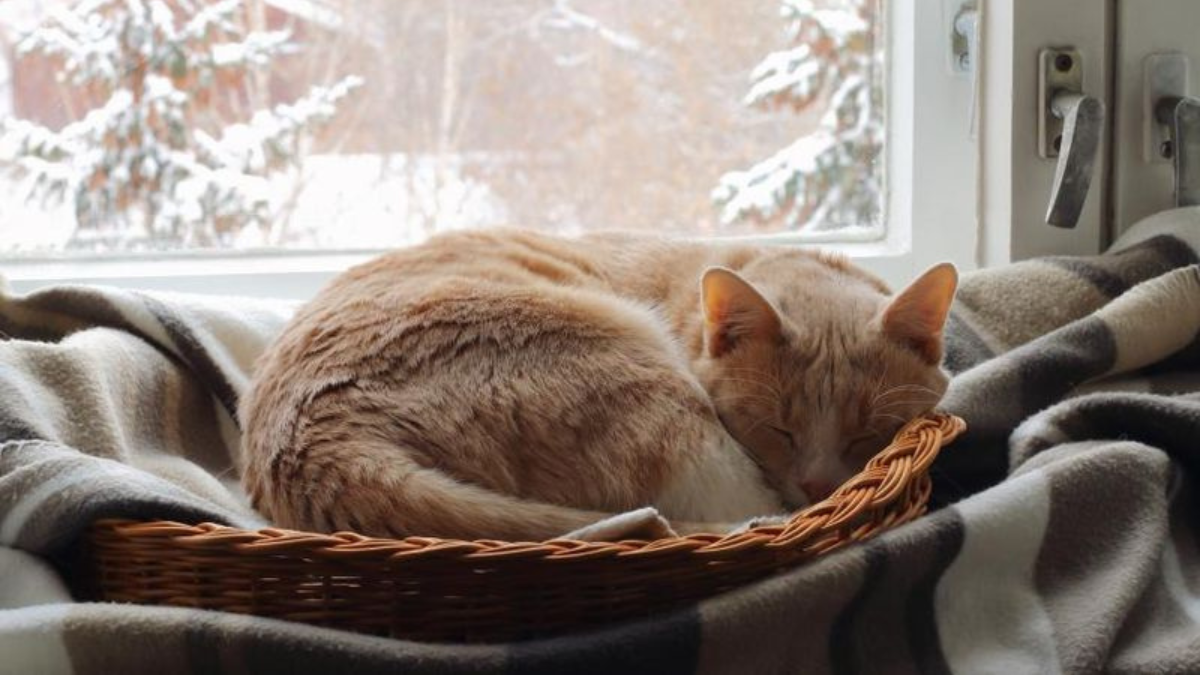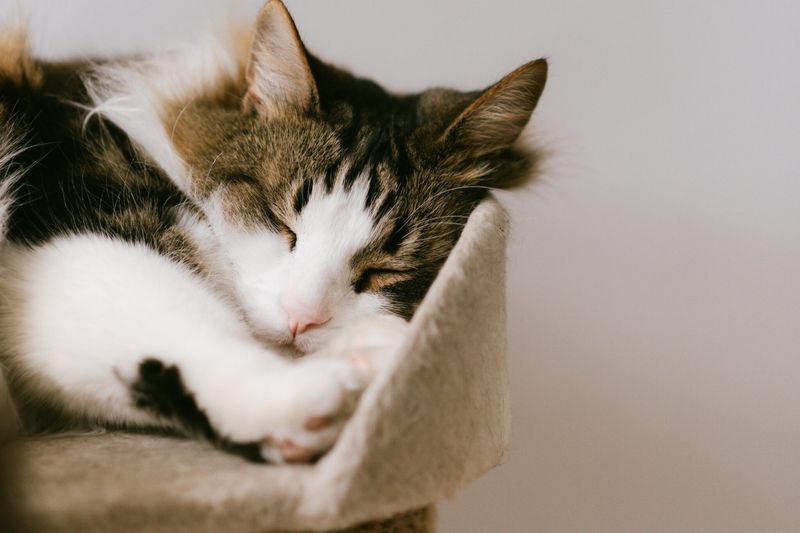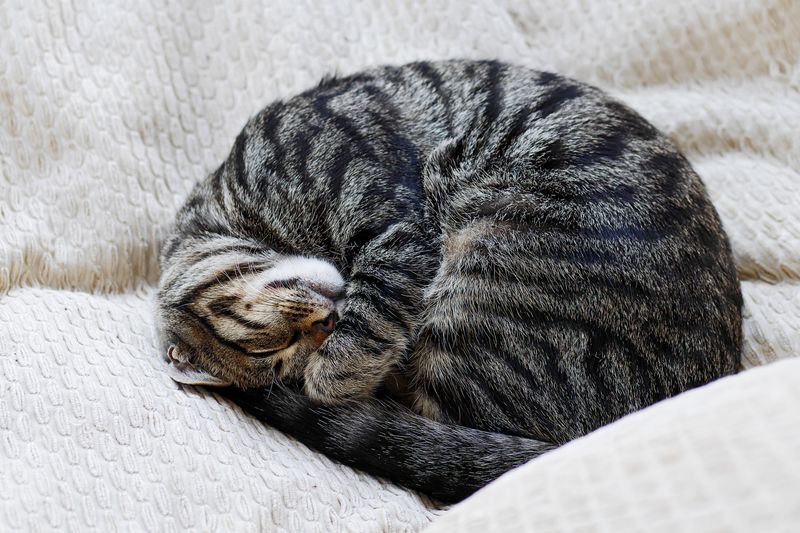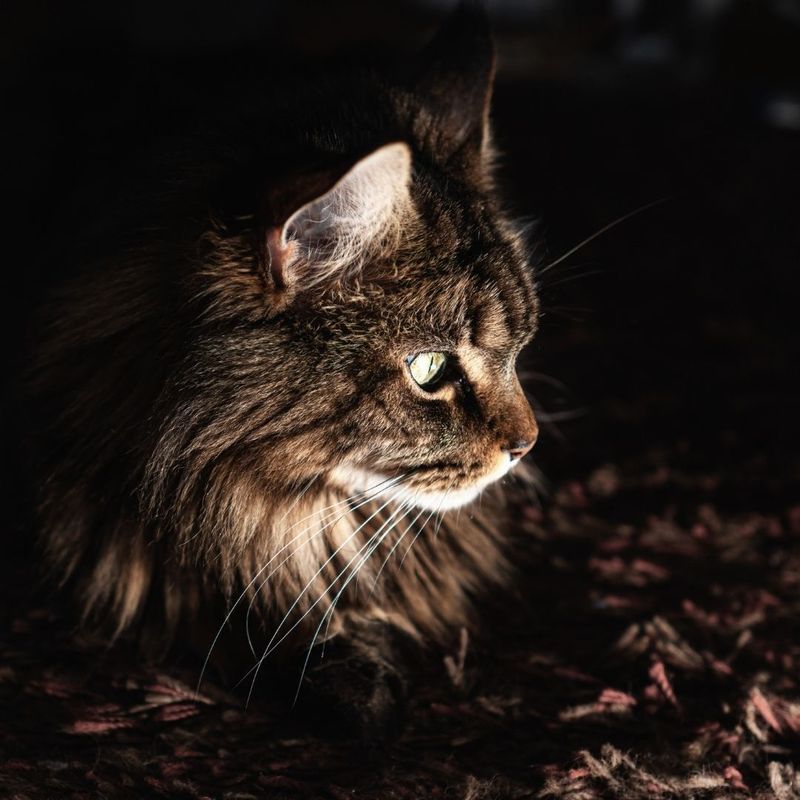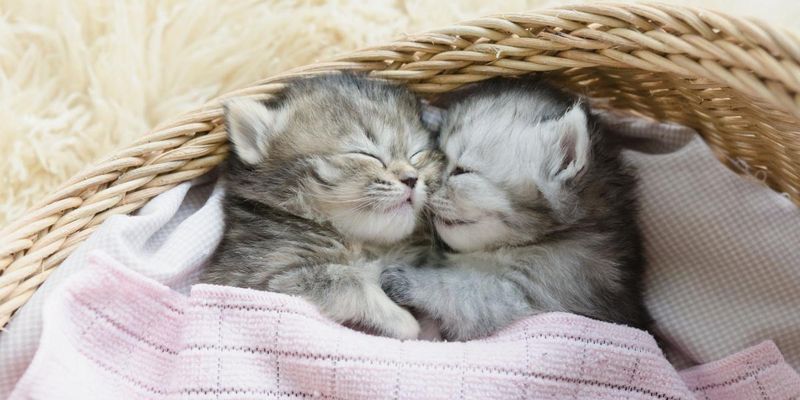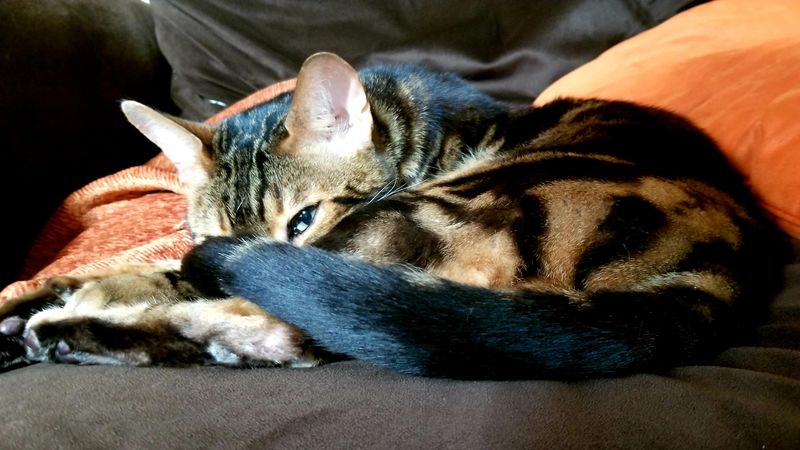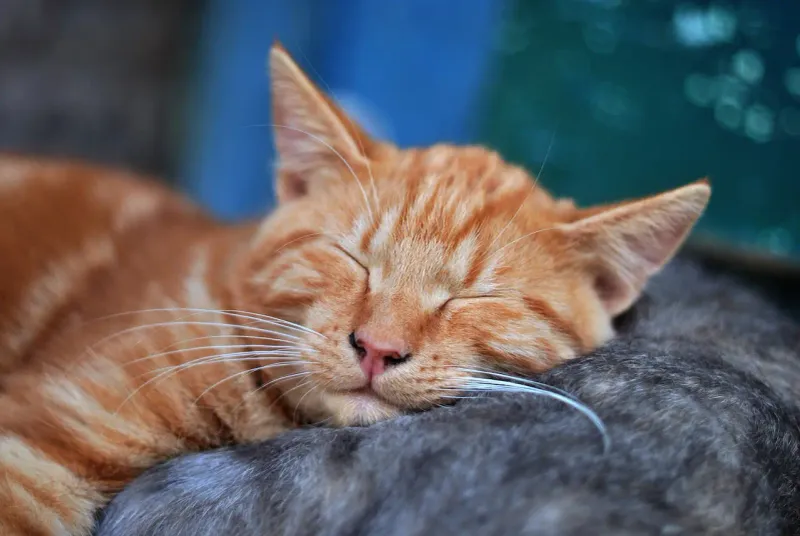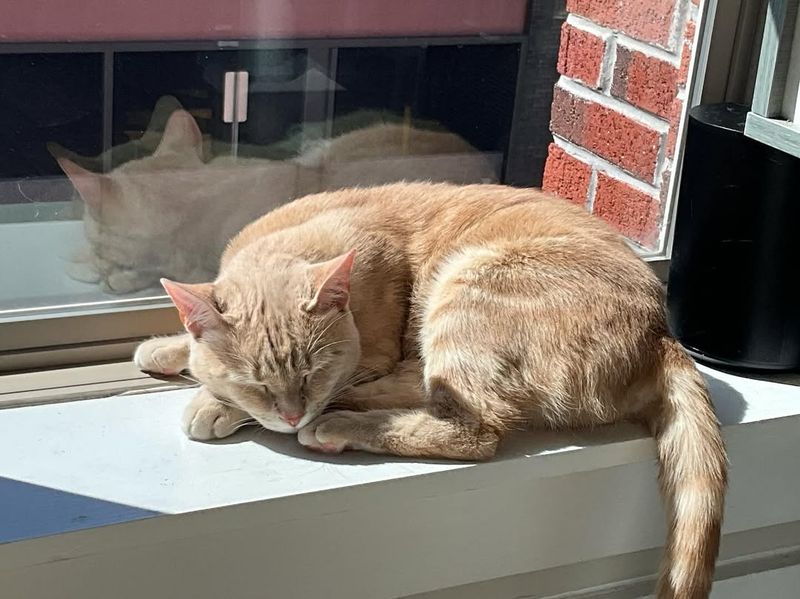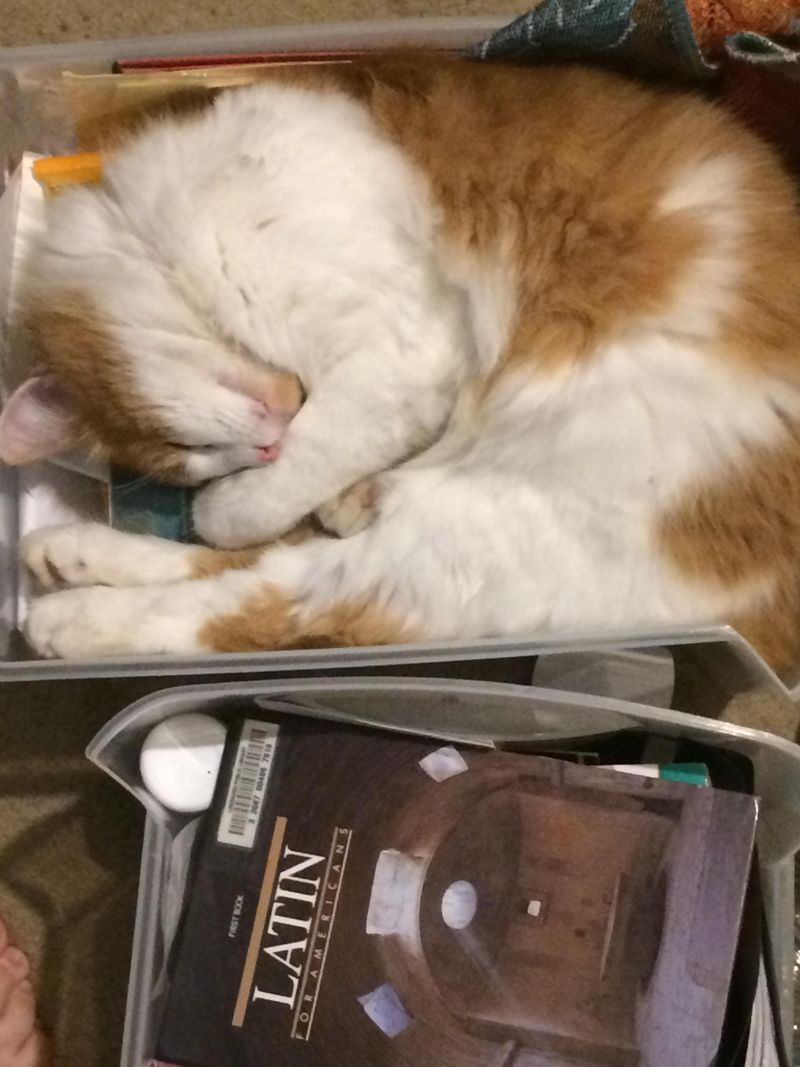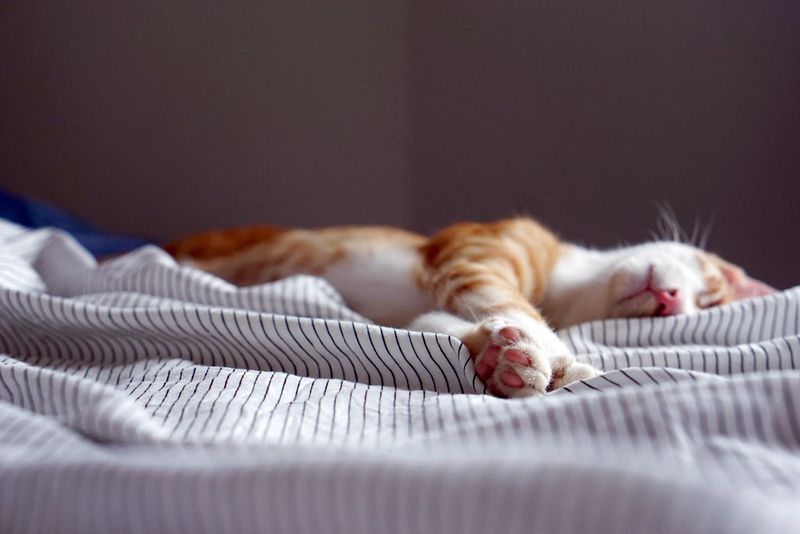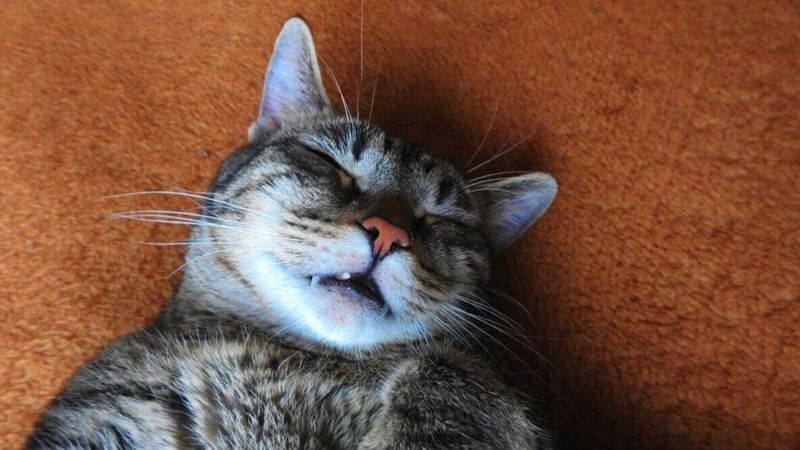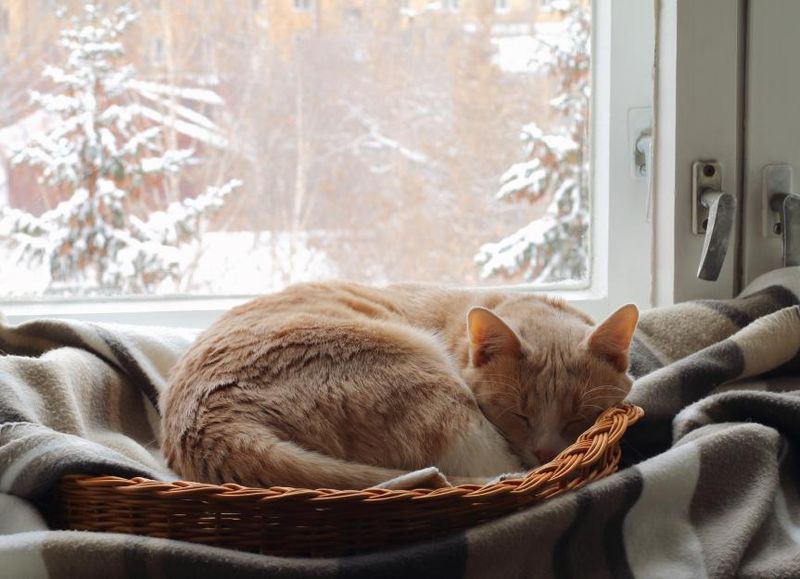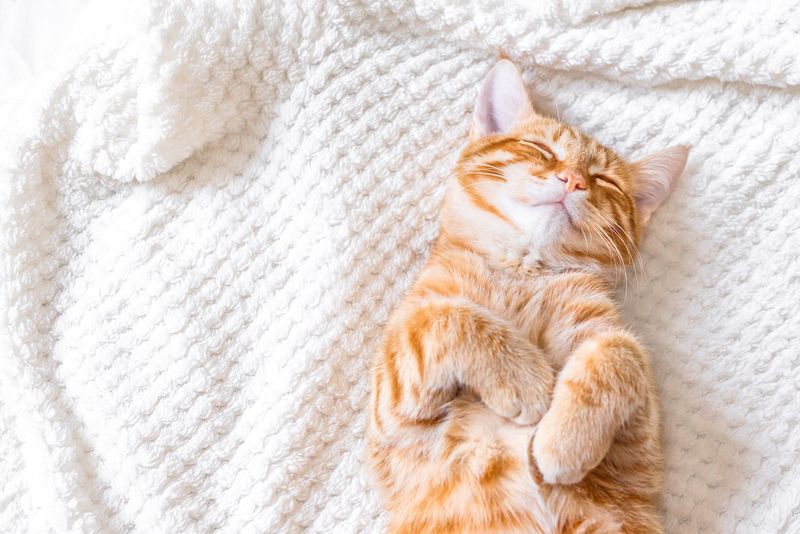📖 Table of Content:
- 1. Cats Dream Like Humans
- 2. Cats Sleep in Various Positions
- 3. Cats Are Crepuscular
- 4. Kittens Sleep More Than Adults
- 5. Cats Sleep With One Eye Open
- 6. Older Cats Need More Sleep
- 7. Cats Sleep to Conserve Energy
- 8. Cats Prefer Warm Sleeping Spots
- 9. Cats Can Sleep Anywhere
- 10. Cats’ Naps Vary in Length
- 11. Cats May Snore
- 12. Cats Sleep More in Winter
- 13. Cats’ Sleep Influences Their Health
Cats have long been known for their love of sleep, often spending the majority of their day napping. With an average of 16 hours of rest each day, their sleep patterns go far beyond mere relaxation. These fascinating creatures have unique sleeping habits that can reveal much about their instincts and daily routines.
Understanding how cats sleep can provide valuable insights into their behavior and overall well-being. From the positions they prefer to the specific times they choose to rest, each detail offers a glimpse into their world. Cats’ sleep habits are not only interesting but also essential to their health and emotional state.
Their sleep is full of surprises, with many aspects that often go unnoticed. From the way they curl up to their complex dream patterns, there’s much more to cat sleep than meets the eye. Here are 13 intriguing facts about how cats snooze, shedding light on the mysterious side of their slumber.
1. Cats Dream Like Humans
Ever noticed your cat twitching in its sleep? That’s a sign that it’s dreaming! Just like humans, cats experience Rapid Eye Movement (REM) sleep, where most dreaming occurs. During this phase, their brains are almost as active as when awake. You may see them flicking their tails or whiskers, and sometimes even letting out soft meows. This suggests they’re chasing imaginary mice or climbing fictional trees.
Isn’t it fascinating to think about what adventures your feline friend might be having in dreamland? Next time, watch closely and imagine the wild escapades they’re possibly exploring.
2. Cats Sleep in Various Positions
Cats exhibit an array of sleeping positions, each telling a story about their mood or comfort level. You might find them belly up, showcasing trust, or curled in a tight ball to conserve warmth. And let’s not forget the classic loaf position, where they tuck their paws underneath. Each pose adds to their charm.
These positions may seem random, but they often reflect how safe and secure the cat feels in its environment. Observing these can reveal a lot about your cat’s state of mind and their comfort with their surroundings.
3. Cats Are Crepuscular
Though many believe cats are nocturnal, they are actually crepuscular, meaning they’re most active at dawn and dusk. This trait is rooted in their wild ancestors’ hunting habits, making them naturally alert during these twilight hours. So, if your cat wakes you up early or joins you for a sunset, they’re just following their instincts.
Understanding this can help you manage their energy bursts. It’s also a perfect time to engage them with playful activities or interactive toys. These moments are ideal for bonding with your feline friend.
4. Kittens Sleep More Than Adults
If you’ve ever seen a litter of kittens, you know they sleep a lot! They can snooze for up to 20 hours a day. This isn’t just because they’re lazy; their bodies require more rest to support rapid growth and development. Sleep helps them build strong bones and muscles.
Their adorable sleeping pile is not only cute but crucial for their health. As they grow older, their sleep patterns will shift, but during these early stages, every nap is a step towards becoming a healthy, agile adult cat.
5. Cats Sleep With One Eye Open
Have you ever seen your cat with one eye open while they rest? This isn’t just a quirky habit. Cats have a fascinating ability to partly remain alert even when they’re asleep. This evolutionary trait allows them to quickly respond to threats, an instinctive behavior stemming from their wild ancestors.
It’s a reminder of their primal roots, even as they enjoy the comfort of a modern home. This semi-alert state is a fascinating blend of relaxation and readiness, ensuring they’re always prepared, whether for a sudden noise or an unexpected visitor.
6. Older Cats Need More Sleep
As cats age, they tend to sleep more. Older cats can spend up to 18 hours a day resting. Their energy levels decrease, and they require more sleep to recharge. This is perfectly normal and part of the aging process, much like it is in humans.
Providing them with cozy, accessible sleeping spots can enhance their comfort. Soft bedding and warm areas become their favorite retreats. Understanding this change helps in catering to their needs, ensuring their golden years are as comfortable and enjoyable as possible.
7. Cats Sleep to Conserve Energy
Energy conservation is a primary reason for cats’ extended sleep. In the wild, cats need to be ready to hunt and capture prey, activities that require bursts of energy. By sleeping more, they preserve their vigor for when it’s needed most. Even domesticated cats retain this instinctual habit.
This behavior demonstrates a blend of their predatory instincts with a need for efficiency. It’s a survival mechanism adapted for modern comforts, reflecting both their wild heritage and their current lifestyle.
8. Cats Prefer Warm Sleeping Spots
Cats are heat-seeking creatures, often found sprawled in sunbeams or cozy corners. This love for warmth is a throwback to their ancestors who thrived in warmer climates. Warmth aids in maintaining their body temperature with minimal energy expenditure, allowing them to remain comfortable and relaxed.
Creating warm sleeping nooks can keep them content and happy. Whether it’s a sunny windowsill or a heated bed, providing these spots can enhance their quality of rest, aligning with their natural preferences for cozy environments.
9. Cats Can Sleep Anywhere
With an almost magical ability to nap wherever they feel comfortable, cats can be found in the most unusual spots—like open drawers or high shelves. This adaptability speaks to their opportunistic nature, a trait passed down from their wild ancestors who constantly roamed in search of rest.
Their choice often seems whimsical, but it’s a testament to their playful and curious nature. Encouraging safe exploration can lead to discovering new favorite spots, making their environment more exciting and enriched.
10. Cats’ Naps Vary in Length
Unlike the consistent sleep schedules humans adhere to, cats’ naps vary greatly in length. They can range from a quick five-minute snooze to a deep, hour-long slumber. This variability is a strategic adaptation to balance rest with readiness, always prepared for unexpected opportunities or threats.
Their flexible sleep pattern is a fascinating aspect of their independent spirit. Understanding this flexibility helps in appreciating their need for both brief and extended rest, allowing them to recharge efficiently and effectively.
11. Cats May Snore
Yes, cats can snore! This adorable behavior is usually harmless and more common in brachycephalic breeds like Persians. Snoring occurs when there’s a partial obstruction in their airway, often due to relaxation or specific sleeping positions.
While it can be cute, if accompanied by other symptoms, it might require a vet’s attention. Generally, a softly snoring cat adds a comforting, domestic symphony to the household, showcasing yet another charming aspect of feline life. It’s a quirky trait that adds to their endearing and often amusing behaviors.
12. Cats Sleep More in Winter
When winter rolls around, cats tend to sleep even more. The cold weather prompts them to conserve energy, seeking warmth in their favorite napping spots. This seasonal behavior aligns with their instinctual need to adapt to changing environments, ensuring they remain snug and comfortable.
Creating warm, inviting nooks becomes even more important during these chilly months. Providing extra blankets or heated beds can help them stay cozy, reinforcing their natural inclination to hibernate-like rest during winter’s chill.
13. Cats’ Sleep Influences Their Health
A cat’s sleeping pattern is closely linked to its overall health. Regular, deep sleep is crucial for maintaining cognitive and physical functions. It supports everything from muscle repair to immune system efficiency. Observing changes in sleep can provide insight into your cat’s well-being.
A well-rested cat is typically more active, playful, and content. Ensuring they have a conducive environment for restful sleep plays a significant role in their health. This foundational aspect of their life is a window into understanding their needs and enhancing their quality of life.
